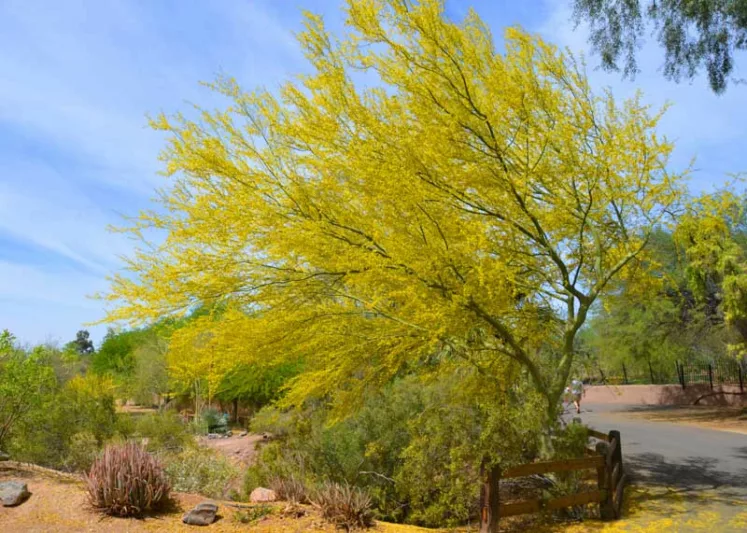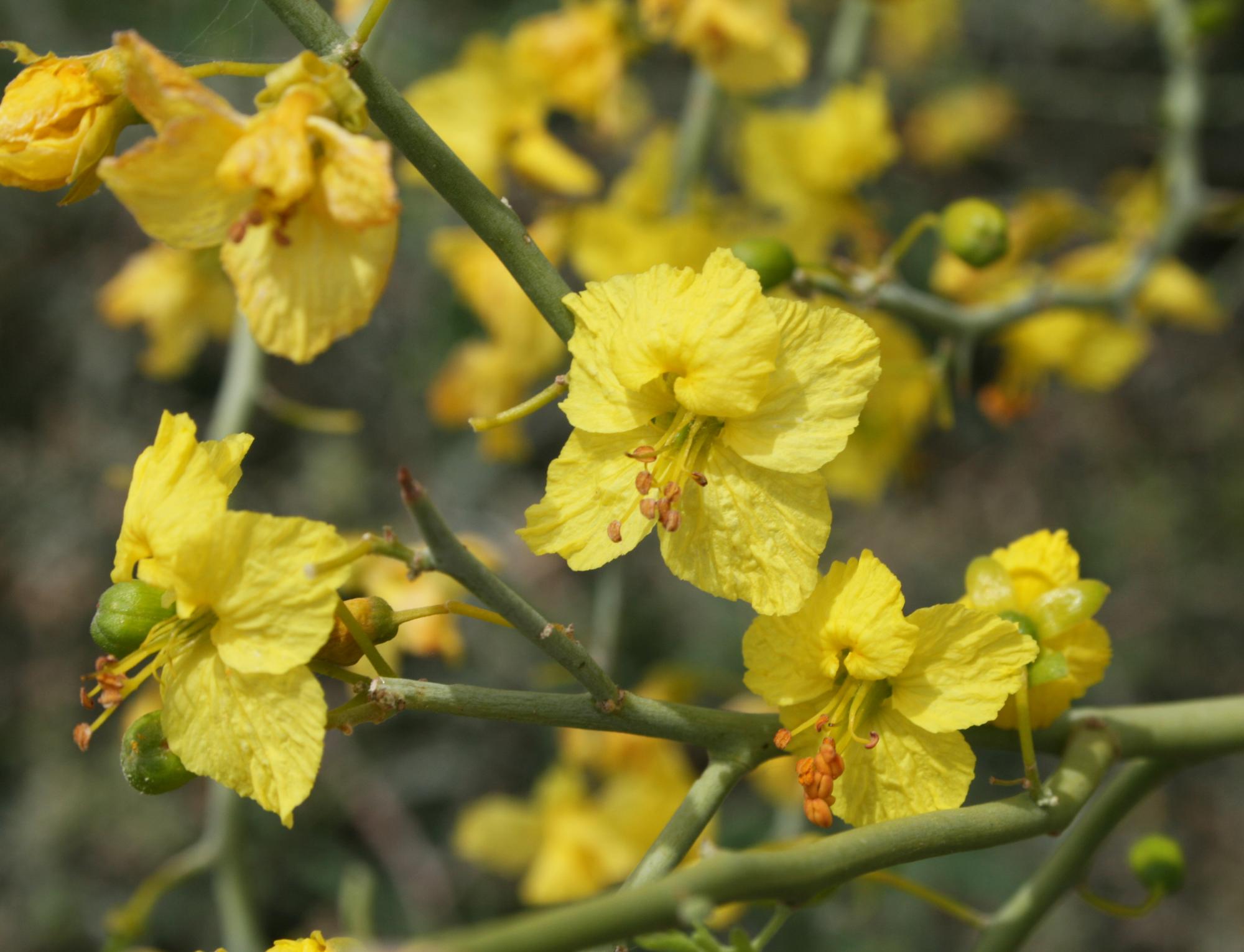Parkinsonia floridum

Parkinsonia floridum, commonly known as Blue Palo Verde, is a striking desert tree native to the southwestern United States and northern Mexico.
Admired for its unique blue-green foliage, vibrant yellow flowers, and drought tolerance, this species holds both ecological and cultural significance in arid regions.
In this comprehensive article, we will delve into the botanical intricacies, habitat preferences, and care guidelines for Parkinsonia floridum.
Botanical Description
Blue Palo Verde is characterized by its distinctive blue-green bark, which provides a striking contrast to its bright yellow flowers.
The tree typically grows to a height of 6 to 9 meters with a spread of 6 to 7.5 meters.
The leaves are small and compound, consisting of numerous tiny leaflets arranged along slender stems. In spring, Blue Palo Verde produces abundant clusters of fragrant yellow flowers that attract pollinators such as bees and butterflies.
The flowers give way to long, slender seed pods that ripen in summer, providing a food source for wildlife.
Habitat and Distribution
Blue Palo Verde is native to arid and semi-arid regions, including deserts, scrublands, and washes, throughout the southwestern United States and northern Mexico.
It thrives in hot, dry climates and is often found growing in sandy or rocky soils with good drainage.
Blue Palo Verde is well-adapted to drought conditions, with an extensive root system that allows it to withstand prolonged periods of drought and limited water availability.
Life Cycle and Phenology
As a perennial tree species, Parkinsonia floridum undergoes a yearly life cycle marked by seasonal growth and flowering.
New growth emerges in spring, with the tree producing an abundance of flowers that cover the canopy in a blanket of vibrant yellow.
Flowering typically occurs in response to rainfall or periods of increased moisture, signaling the onset of the growing season.
The flowers are pollinated by bees and other insects, with seed production and dispersal occurring in summer.
Blue Palo Verde may experience a period of reduced growth and dormancy in winter, but it remains green and photosynthetically active throughout the year.
Ecological and Cultural Importance
Blue Palo Verde plays a vital ecological role as a keystone species in desert ecosystems, providing food, shelter, and habitat for a variety of wildlife species.
The flowers attract pollinators such as bees, butterflies, and hummingbirds, contributing to the health and diversity of local ecosystems.
The seeds are eaten by birds and small mammals, while the foliage provides shade and refuge for desert wildlife.
Additionally, Blue Palo Verde has cultural significance as a symbol of resilience, adaptability, and survival in harsh desert environments.

Caring for Parkinsonia floridum
Sunlight
Plant Blue Palo Verde in a location that receives full sun, as it requires abundant sunlight to thrive and bloom profusely.
Watering
Provide regular water during the establishment period, but once established, Blue Palo Verde is highly drought-tolerant and requires minimal supplemental irrigation.
Allow the soil to dry out between waterings to prevent root rot.
Soil
Plant in well-drained, sandy or rocky soil with a neutral to slightly acidic pH.
Avoid planting in heavy clay soils, as they can retain too much moisture and lead to root rot.
Mulching
Apply a layer of organic mulch around the base of the tree to conserve moisture, suppress weeds, and regulate soil temperature. Keep the mulch several inches away from the trunk to prevent rot.
Pruning
Prune Blue Palo Verde as needed to remove dead, diseased, or damaged branches.
Avoid excessive pruning, as this can stress the tree and reduce flowering and overall vigor.
Following these instructions ensures thriving Parkinsonia floridum trees, enriching arid landscapes and respecting the resilience of desert flora.
Whether as focal points, shade providers, or wildlife habitats, Blue Palo Verde captivates in arid environments.
Leave a Reply
You must be logged in to post a comment.